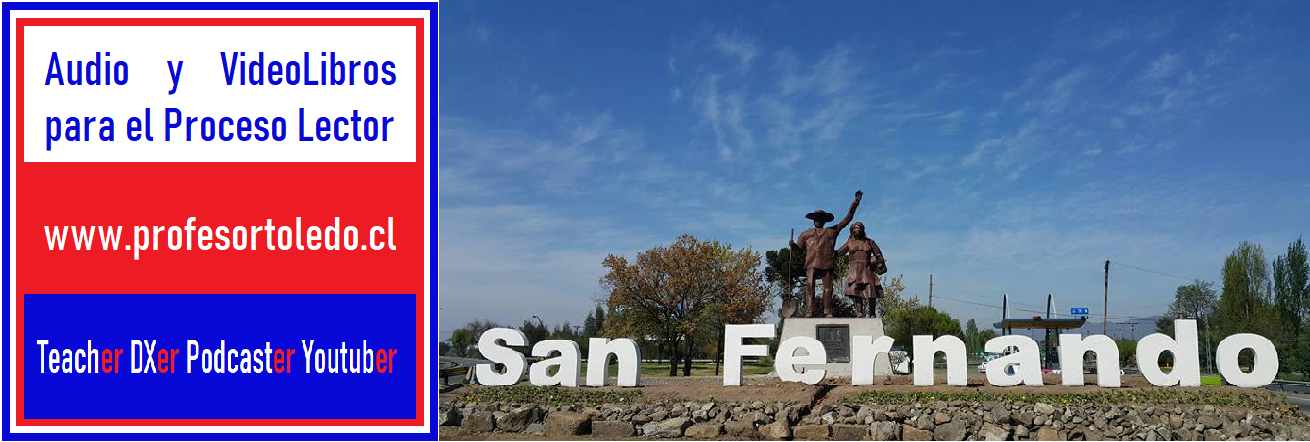Poadcasting educativo en la Universidad de Wisconsin
Pedagogical Podcasting or Podagogy
Educators involved in eLearning are rediscovering the power of the spoken word by utilizing new technologies to communicate with students outside the traditional classroom. Podcasting is a new medium that enables you to easily incorporate on-demand audio recordings into your curriculum. Follow the five steps below to get started creating your first podcast.
Five Steps to Designing Podcasts that Teach
Step 1: Select appropriate content
Here are few things to keep in mind when selecting content for a podcast.
Avoid overly complex and dense content material that includes lots of facts and figures.
It’s best to avoid this type of content for a a podcast. Subject matter with lots of details and complex relationships is often conveyed most effectively through lectures and readings. This is because most students listen to podcasts as they perform other tasks (i.e., riding a bus, driving, exercising, walking to class, etc.). In most cases they won’t be taking notes as they listen. Always keep in mind the learner’s context when selecting content for a podcast.
Recordings of classroom lectures may not be the best use of podcasting.
Podcasts of entire lectures often come across overly formal and stilted. Important visuals are excluded. Only use lectures as podcasts when you have a strong pedagogical rationale for doing so.
Narrow the focus of a podcast .
Limit the scope of your content and don’t try to communicate too much material in a single podcast. Instead, identify important concepts or issues students tend to struggle with and develop a podcast episode that addresses each one. You can also focus on helping students acquire better learning strategies for approaching specific assignments or topics.
Step 2: Determine your instructional goal
Having a clear instructional goal and purpose for each podcast will help guide the development process and result in better learning. The table below provides a few examples of instructional goals for podcasting.
Instructional Goal
Podcast focus
Prepare or motivate learners for learning new content Arouse interest and curiosity about a new topic to increase learner motivation
Inform students of the learning outcomes or benefits of learning new content
Influence feelings and attitudes about a topic prior to a lecture or reading assignment
Recall and integrate previously learned material with new content Explain the connection between what students have previously learned with new content to be presented in a lecture or reading assignment
Provide high-level overviews Prior to presenting a new topic, provide a general overview as an advanced organizer
Before teaching a complex skill or procedure provide a mental framework from which to approach it
Provide a lead-in to an assignment or learning activity Discuss in more detail what you expect of students from an assignment and how you suggest they best approach it
Elaborate on and further explain a complex concept Explain nuances and intricacies of a difficult concept, principle or abstract process
Provide learning guidance and strategies for understanding new content or solving problems Provide coaching and advice on learning strategies or approaching certain problem solving tasks
Provide content to encourage analysis Provide a stimulus for students to react to or reflect upon for deeper analysis
Provide some variety in the learning environment Bring in other people’s viewpoints
Student projects & assignments Students create their own podcasts
Step 3: Design your content
Coming up with a good message design strategy for a podcast requires creativity. The approach you use to communicate your message is what makes or breaks your podcast from a listener perspective. Monologues, interviews, dialogues and other approaches used in radio broadcasting are all examples of design strategies. A few message design principles are provided below.
o Frame your content into a problem or challenge and explain how that problem or challenge can be addressed.
o Obtain voices of other experts you’ve interviewed about specific topics of interest to students in the course.
o Use a case story that illustrates a key topic or learning goal.
o Share a personal story. You’re an expert in the field and likely have a wealth of experiences that may not fit into a lecture.
o Capture dialogs with opposing viewpoints. This is often done on radio and television talk shows.
o Keep the length of a podcast short. Most experienced podcasters recommend a program length anywhere between 3 and 15 minutes.
Step 4: Produce your podcast
Research in educational media shows that people learn better when instructional material is presented in a personal and informal way. When you record your podcast keep some of the following principles in mind.
o Don’t lecture. Don’t read a script. You can refer to an outline to help keep you on track during the recording session.
o Instead, talk as if you were speaking with a student sitting right in front of you in your office.
o Express your passion, enthusiasm and excitement for the content material in your voice and tone.
o Be yourself, flaws and all. Listeners will tolerate a few ums or poorly executed sentences.
o Edit out extraneous material later if you want.
Step 5: Incorporate the podcast into your course
You should be thinking about this even before you produce your podcast. The key is to tightly integrate a podcast into your course content and learning activities. If you make it optional, most students will not listen to it. Try to make your podcast part of a required learning activity instead of an ancillary content resource. At a minimum, make sure it is perceived as valuable for at least 50% of the students in your class.
